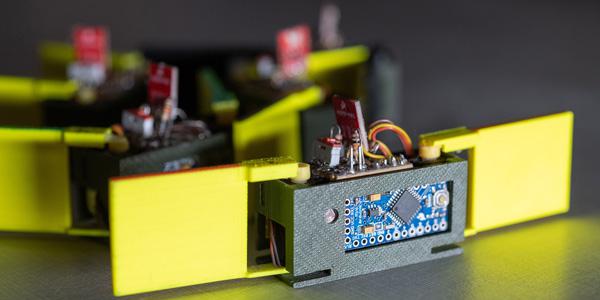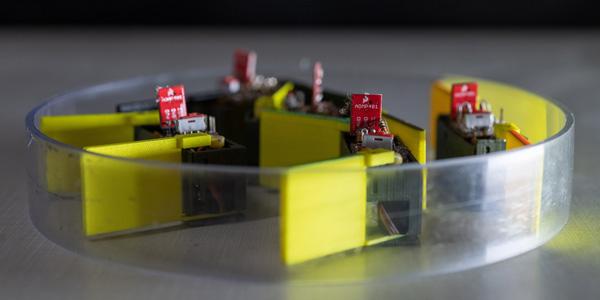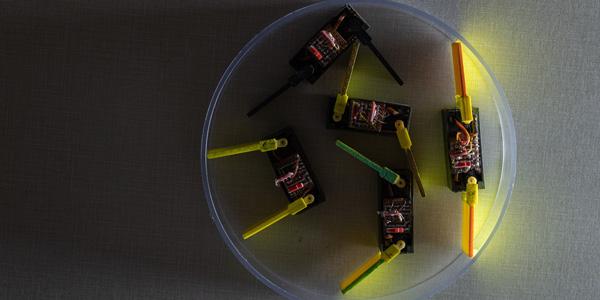Shape-Shifting Robots Built from Smaller Robots
Researchers have taken a new approach to developing robots—using smaller robots known as “smarticles” to unlock the principles of a potentially new locomotion technique. The 3D-printed smarticles—short for smart active particles—can only do one thing: flap their two arms. But when five of these smarticles are narrowed in a circle, they begin to push one another, forming a robophysical system known as a “supersmarticle” that can move by itself. Adding a light or sound sensor allows the supersmarticle to move in response to the stimulus.
The idea of making robots from smaller robots could provide mechanically based control over very small robots. Ultimately, the emergent behavior of the group could provide a new locomotion and control approach for small robots that could potentially change shapes.
The project is of interest to the U.S. Army because it could lead to new robotic systems capable of changing their shapes, modalities and functions, said Sam Stanton, program manager of complex dynamics and systems at the Army Research Office, an element of U.S. Army Combat Capabilities Development Command’s Army Research Laboratory, in a press release.
“Future Army unmanned systems and networks of systems are imagined to be capable of transforming their shape, modality and function. For example, a robotic swarm may someday be capable of moving to a river and then autonomously forming a structure to span the gap,” Stanton said.
The research, which was supported by the Army Research Office and the National Science Foundation, was reported in the journal Science Robotics. Researchers from Northwestern University and Georgia Institute of Technology also contributed to the project.







Comments